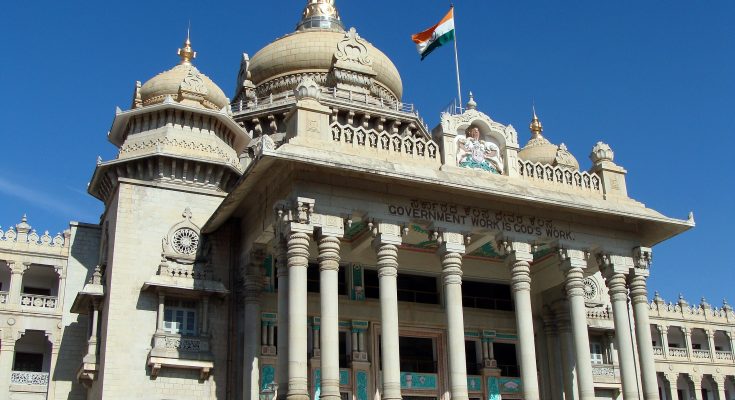It is high time that we look at technology to revamp our existing mechanisms of the third government function – contract enforcement.
According to Milton Friedman, the 1976 Nobel Laureate for economics, the three primary functions of a government are law and order, defence, and contract enforcement. Contract enforcement works in an economy where all economic transactions are basically contracts between two or more parties, including governments.
The current role of contract enforcement by governments is performed mainly through laws and regulations, governing the behaviour of the parties under a contract. And most enforcement is done in a manner of deterrence, by setting up penal provisions for parties that violate agreed standards of contract performance and enforcing those provisions after adjudication.
Yet, in today’s age of smart contracts, it is technology that can be a major instrument of enforcement. Through distributed ledgers, blockchain can easily establish trust between multiple parties which may or may not have an aligned interest. Importantly, it can be done without intermediaries.
Governments are the biggest intermediaries of the traditional mode of contract enforcement and spend significant resources on it. However, a well-functioning economy requires exceptional trust in the enforcing intermediary on the part of economic agents, including investors, entrepreneurs and consumers.
In accordance with the latest ranking in the World Bank’s Ease of Doing Business Index, India comes the 5th of all economies that have managed to improve across three or more areas, following Afghanistan, Djibouti, China and Azerbaijan. Nevertheless, India’s tremendous improvement in the ranking is still marred by relatively low improvement in contract enforcement, where India comes only 172nd out of 190 countries.
Punit Shukla, Project Lead in Artificial Intelligence and Machine Learning, believes that smart contracts can help Indian government tackle the problem of contract enforcement more effectively than the current system.
Smart contracts are programmatic functions executed when certain specified conditions are fulfilled, explains Punit Shukla. These self-enforceable protocols written in code are powered by asset or transaction registries on a decentralized ledger, thus removing the chance of any corruption in the registry information. These contracts eliminate the chances of non-performance of the contract by either party, so no legal mechanism is required to enforce the contract.
For example, in a transaction of a land asset between a buyer and a seller, a smart contract can be encoded and deployed on the blockchain to transfer the title of the landholding from the seller to the buyer. The contract scans the distributed registry of land assets, verifies the title ownership claim of the seller, validates if the buyer has adequate capital to buy the land, initiates a payment debit, confirms a credit to the seller’s account, ensures the land duties and taxes are deducted and paid to the state (assuming the state agency is a participant node on the blockchain) – and then transfers the land title ownership to the buyer and adds that information to the registry.
This process eliminates the chance of non-performance as it is self-executing and non-repudiating (the parties to the contract can’t deny the contract execution or failure). Since performance is now mandated by technology, parties will not experience breach of contracts leading to court disputes.
A crucial question that arises here is why this can’t be done through a centralized platform instead of a decentralized ledger?
That is where the issue of trust comes in. Taking the case of land assets further, the state maintains the Record of Rights (RoR) – a registry of land assets in India. However, the RoR is not definitive proof of land ownership (known as ‘presumptive land titling system’). It is interesting to note that a land titling transfer in many states in India involves a notice broadcast by the administration to check for an objection or counterclaim from the extended community of residents in the area. In effect, this is a physical form of “consensus protocol” where validation of the transaction is done by the community (or invalidation is reported). As two-thirds of civil cases handled by district courts in India (district courts contribute over 80% of all pending cases) are land and property-related cases, low trust in the government-maintained RoR becomes evident.
Punit Shukla argues that building a decentralized registry of land and property assets and enabling the community to engage with smart contracts could unlock the potential of the land/asset market in India.
But the power of blockchain and smart contracts is only fully realized when they can reliably interact with other external, non-blockchain systems. In the “real” world where data is rarely generated and stored on a distributed ledger, smart contracts need governance models to harmonize inter-system communication. Many national systems (citizen service portals, ID systems, real-time payments systems, property and land registries, insurance and welfare schemes) are major infrastructural platforms for a country. While the coding capability of smart contracts has progressed from just being able to execute currency-like transactions to full programmability, it is still not able to code for all possible contract scenarios. The innovative potential of blockchain, therefore, to drive efficiency and transparency can only be realized if smart contract systems can communicate reliably with non-blockchain systems and auto-execute transactions.
An example of potential inter-system communication is integrating smart contracts with India’s payment service UPI (Unified Payments Interface, a mobile-first, real-time, peer-to-peer, account-to-account payment system). With this in place, smart contracts could transfer insurance claims to farmers in case of weather-induced crop damage, completely eliminating human discretion by integrating with satellite data to validate crop damage and transfer the claim to the farmer’s bank account by UPI.
The World Economic Forum’s Centre for the Fourth Industrial Revolution is scoping a project that would build a governance framework for smart contract interoperability between blockchain systems and non-blockchain systems. Such a model will allow blockchain projects to scale faster and be production-ready more quickly.
Interoperability standards and communication protocols can help solve the problems inherent in many use cases, such as disintermediation and reduction in leakages of welfare transfers, real-time settlement of economic incentives for renewable energy produced and contributed to the grid and even executing Rupee denominated smart contracts by using the UPI payment platform.
This article first appeared in Blockchain247.
Image: Vikasa Soudha, the seat of the state legislature of Karnataka, in Bengaluru, India / Bishnu Sarangi



